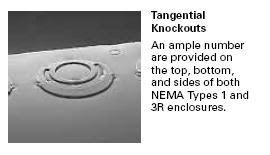I did not read the whole thread, so I may be repeating what someone else has posted...If so, I am sorry.
GROUNDING AND BONDING
EQUIPMENT (KDER)
USE
This category covers bonding devices, ground clamps, grounding and
bonding bushings and locknuts, ground rods, armored grounding wire, protector
grounding wire, grounding wedges, ground clips for securing the
ground wire to an outlet box, water meter shunts, and similar equipment.
Some devices are to be assembled to wire using a special tool specified by
the manufacturer. Such special tooling is identified by appropriate marking
on or within the device shipping carton.
Grounding and Bonding Bushings
— Bonding bushings for use with conduit fittings, tubing (EMT) fittings, threaded rigid metal and intermediate metal conduit, or unthreaded rigid metal and intermediate metal conduit
are provided with means (usually one or more set screws) for reliably bonding the bushing (and the conduit on which it is attached) to the metal equipment enclosure or box. They provide the electrical continuity required by the
NEC at service equipment and for circuits rated over 250 V.Means for connecting a grounding or bonding conductor are not provided and if there is need for such a conductor a grounding bushing should be used. Grounding bushings for use with conduit fittings, tubing (EMT) fittings, threaded rigid metal and intermediate metal conduit, or unthreaded rigid metal and intermediate metal conduit have provision for the connection of a bonding or grounding wire or have means for mounting a wire connector available from the manufacturer. Such a bushing may also have means (usually one or more set screws) for reliably bonding the bushing to the metal equipment enclosure or box in the same manner that this is accomplished by a bonding bushing. Grounding bushings provide the electrical continuity required by the NEC at service equipment and for circuits rated over 250 V.
They may be used with or without a bonding or grounding conductor as determined by the bonding or grounding function that is intended to be
accomplished.


